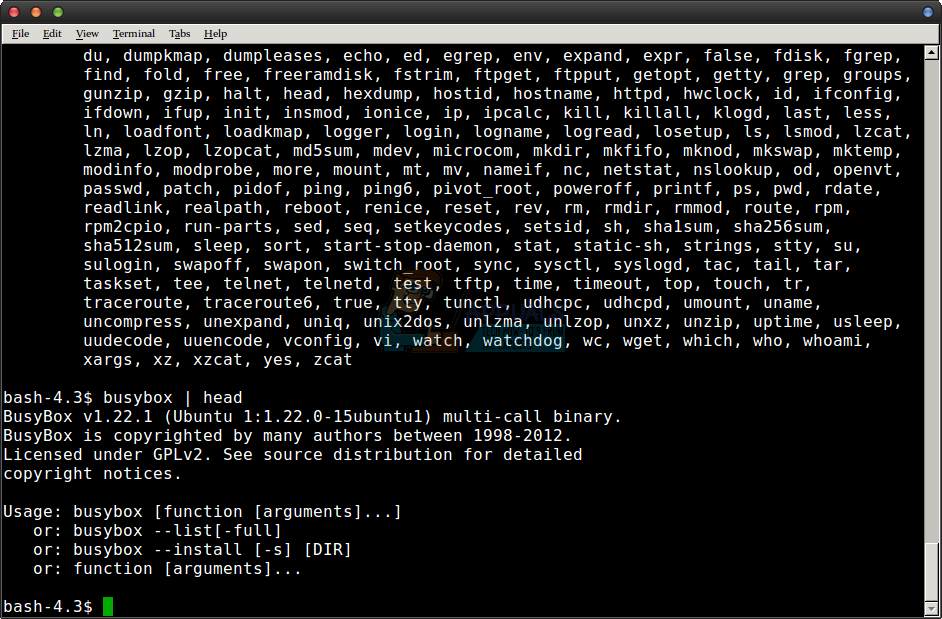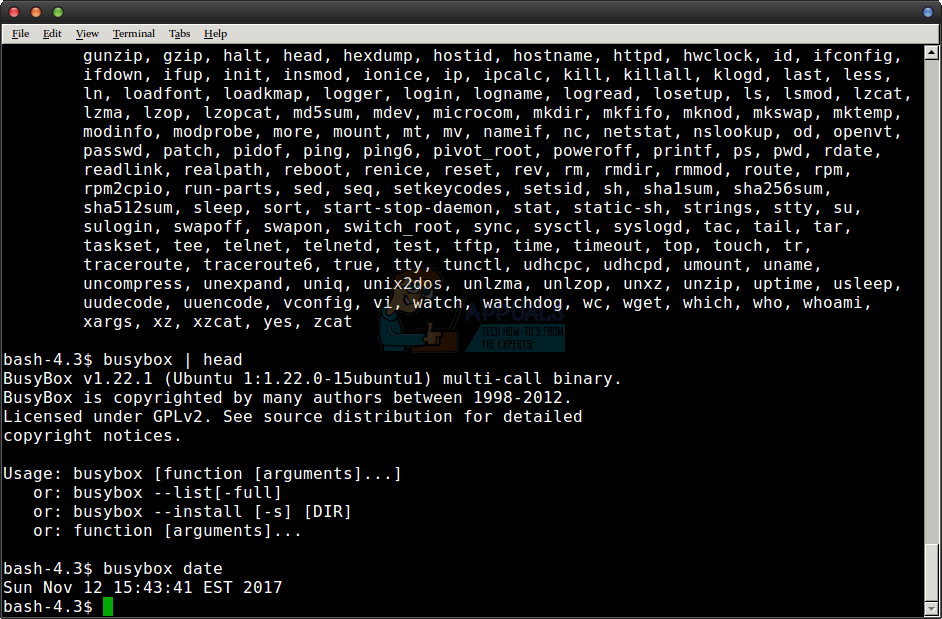How to Check busybox Version & Installation Information
The busybox binary offers you a ton of different little versions of Unix programs all wrapped up into one big package. You might use it because you’re on a tiny version of Linux that doesn’t feature some of these command utilities. At times even users of the biggest distributions might want to use it because they don’t one program or another installed. It’s easy to check the current busybox version number and what applets you have installed with it by calling the program itself.
You’ll need to be logged into a virtual terminal for this to work. Hold down Ctrl, Alt and T or search for the word Terminal on the Ubuntu Unity Dash. LXDE, Xfce4, Mate and KDE users may wish to click on the Applications menu and then point to System Tools. You can then click on Terminal, but you won’t need to have root access for this to work.
Method 1: Checking Current busybox Functions and Version Number
If you want to find out the entire list of binaries that your busybox binary supports, then type busybox and push enter. Be careful, because you’re going to get so much information that it’s bound to run straight off the screen. Most people have dozens of tiny replacements for the utilities that you normally find in packages like util-linux and the GNU coreutils implementations. That’s actually why programmers call it the Swiss Army Knife of Embedded Linux. If you’re in any sort of modern terminal emulator window, then you can always scroll back up to see what functions you might have missed out on.

You can also always try typing busybox | less and then push the enter key so that you can scroll up and down with either the cursor keys or the vi keys. If you ran it this way, then type q and push the enter key to get out of the scrolling program.

Users who are interested only in the version number of the busybox multi-call binary, such as those trying to keep embedded Linux systems up to date, will instead want to try typing busybox | head as a command. This just gives you the first little bit of that huge page of information that busybox will usually dump at you. You may see something like (Ubuntu 1:1.22.0-15ubuntu1) along with the actual version number.
This doesn’t indicate that anything is wrong at all. In fact, seeing it means that busybox is working perfectly fine. Any extra numbers merely helps to showcase the fact that you’re using a version that’s been compiled to a specific Linux distribution’s specifications. Users of Kubuntu, Xubuntu, Lubuntu and all of the other Ubuntu spins will see this same message. Those who use Red Hat and Fedora might see another type. It’s safe to ignore it if you’re updating things through the normal package system that your distribution uses. You’ll find it gets updated with everything else, but busybox updates are rare anyway.
You could say, though, that the binary answers the question what is busybox without any outside help!
Method 2: Calling a busybox Applet
Now that you know which options were compiled into busybox, you can run them anytime you like. Simply type the word busybox followed by the command given in that long list from Method 1 to run it. For instance, we’ll pick a nice safe one to run like busybox date, which should tell us what time it is.

This can be extremely helpful for commands that you don’t see all the time. For instance, many users of Ubuntu and Fedora don’t have dos2unix and unix2dos installed. These helpful little programs convert between the LF newline characters that Unix/Linux text files use and the CR+LF ones that MS-DOS and Windows files use. If you had a file called myFile.txt that you made on Linux, then you could type busybox unix2dos myFile.txt to convert it for reading on Windows. Typing busybox dos2unix myFile.txt would then convert it back. This will even work for transferring files over to Windows 10.
This binary is loaded with many little goodies like, but be cautious because these are full-featured versions of every program that the busybox binary claims to offer. While they might be pared down editions, dd and fdisk are still dd and fdisk. You can still bork an install playing around with those. Just exercise the same level of discretion that you’d have with regular commands.